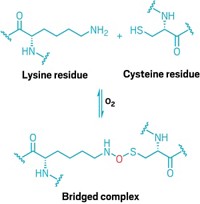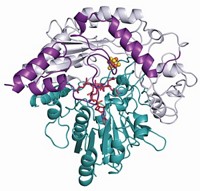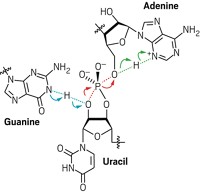Advertisement
Grab your lab coat. Let's get started
Welcome!
Welcome!
Create an account below to get 6 C&EN articles per month, receive newsletters and more - all free.
It seems this is your first time logging in online. Please enter the following information to continue.
As an ACS member you automatically get access to this site. All we need is few more details to create your reading experience.
Not you? Sign in with a different account.
Not you? Sign in with a different account.
ERROR 1
ERROR 1
ERROR 2
ERROR 2
ERROR 2
ERROR 2
ERROR 2
Password and Confirm password must match.
If you have an ACS member number, please enter it here so we can link this account to your membership. (optional)
ERROR 2
ACS values your privacy. By submitting your information, you are gaining access to C&EN and subscribing to our weekly newsletter. We use the information you provide to make your reading experience better, and we will never sell your data to third party members.
Synthesis
Ancient Mechanism Aids Modern Enzyme
September 15, 2008
| A version of this story appeared in
Volume 86, Issue 37
The enzyme inosine monophosphate dehydrogenase (IMPDH) catalyzes a critical two-part sequence in the synthesis of guanine nucleotides in prokaryotes and eukaryotes. First it dehydrogenates IMP to form an intermediate that is bound to a protein cysteine (Cys) residue, then the enzyme hydrolyzes the intermediate to form xanthosine monophosphate (XMP, reaction shown, R = ribose 5′-monophosphate). Now, a group led by Lizbeth Hedstrom of Brandeis University and Wei Yang of Florida State University has used a combination of computational simulations and experiments to study IMPDH's hydrolase activity and found that the enzyme likely works by transferring a proton from water to a neutral arginine residue (PLoS Biol., DOI: 10.1371/journal.pbio.0060206). When the arginine is protonated, however, the group found that the most likely mechanism involves a proton relay in which a threonine residue abstracts the proton from water while transferring its own proton to a nearby glutamate residue. The fact that the threonine and glutamate residues are conserved in a related enzyme, guanosine monophosphate reductase, led the group to propose that the threonine pathway was used in an ancestral enzyme and has been preserved in prokaryotes to satisfy nucleotide demand during proliferation.






Join the conversation
Contact the reporter
Submit a Letter to the Editor for publication
Engage with us on Twitter